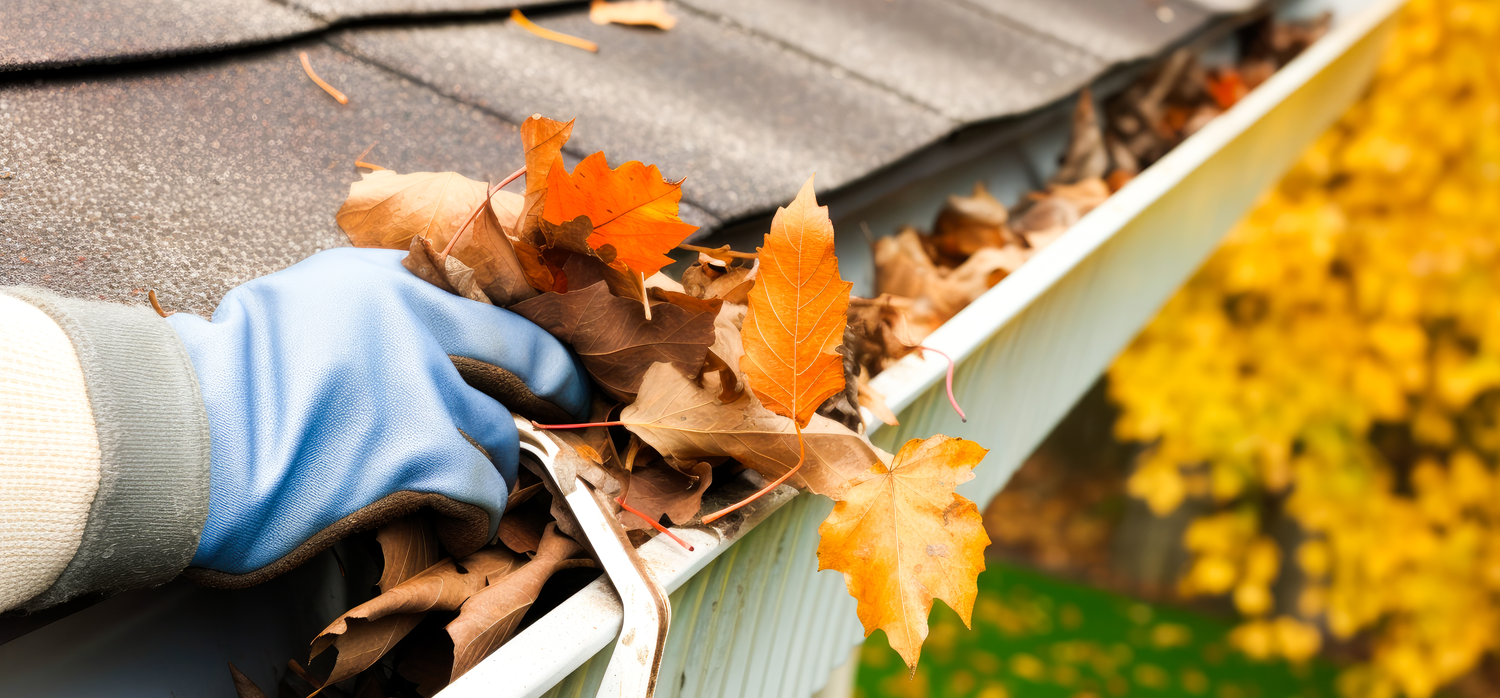Why Eavestrough Cleaning is Important
Eavestroughs are designed to channel water away from your home, but they can become clogged with leaves, twigs, dirt, and other debris. This blockage can prevent them from functioning correctly, leading to several issues:
- Prevent Water Damage
Clogged eavestroughs can cause water to overflow and seep into your home’s roof, walls, and foundation. This can lead to water damage, mold growth, and structural issues, which can be costly to repair. Regular cleaning ensures water flows properly and is directed away from vulnerable areas. - Avoid Pest Infestations
Debris-filled eavestroughs provide an ideal breeding ground for pests like mosquitoes, rodents, and birds. These pests can cause further damage to your home and pose health risks. Keeping your eavestroughs clean helps eliminate potential nesting sites and reduces the risk of infestations. - Maintain Roof Health
Excess water from clogged eavestroughs can back up under your roof’s shingles, leading to rot and damage. This can shorten the lifespan of your roof and necessitate premature repairs or replacement. Clean eavestroughs help protect your roof and extend its longevity. - Protect Your Landscaping
Overflowing water can erode soil and damage plants, flowers, and shrubs around your home. Properly functioning eavestroughs direct water away from your landscaping, helping to preserve your garden’s health and appearance. - Prevent Basement Flooding
Water that accumulates around your home’s foundation can seep into your basement, causing flooding and moisture problems. This can lead to mold growth and damage to your basement’s structure and contents. Clean eavestroughs help prevent basement flooding by directing water away from your home.
DIY Eavestrough Cleaning Tips
Cleaning your eavestroughs might seem daunting, but with the right tools and safety precautions, it’s a task you can handle yourself. Here are some DIY tips to help you get started:
- Gather the Right Tools
Before you begin, make sure you have the necessary tools:
• A sturdy ladder
• Work gloves
• Safety goggles
• A garden trowel or gutter scoop
• A bucket or bag for debris
• A garden hose with a spray nozzle
• A plumber’s snake or wire hanger (for stubborn clogs) - Ensure Safety First
• Safety should be your top priority when cleaning eavestroughs:
• Use a sturdy ladder and ensure it’s placed on a level surface.
• Have someone hold the ladder for added stability.
• Wear work gloves and safety goggles to protect your hands and eyes from debris.
• Avoid overreaching while on the ladder. Move the ladder as needed to reach different sections of the eavestroughs. - Remove Debris
Start by removing larger debris like leaves and twigs using a garden trowel or gutter scoop. Place the debris in a bucket or bag for easy disposal. Be thorough, making sure to clear all the nooks and crannies of the eavestroughs. - Flush with Water
Once the larger debris is removed, use a garden hose with a spray nozzle to flush out any remaining dirt and small debris. Start at the end opposite the downspout and work your way towards it. This will help push the debris towards the downspout and clear the entire eavestrough. - Check the Downspouts
Ensure the downspouts are clear and free of obstructions. Use a plumber’s snake or a straightened wire hanger to remove any clogs. You can also flush water through the downspouts to check for blockages. If the water flows freely, your downspouts are clear. - Inspect for Damage
While cleaning, take the opportunity to inspect your eavestroughs for any signs of damage, such as rust, corrosion, or loose sections. Address any issues you find promptly to prevent further damage. Tighten any loose screws or brackets and seal any leaks with a suitable sealant. - Regular Maintenance
To keep your eavestroughs in good condition, establish a regular cleaning schedule. It’s generally recommended to clean them at least twice a year, in the spring and fall. However, if you have many trees around your home, you might need to clean them more frequently.
When to Hire a Professional
While DIY cleaning is manageable for many homeowners, there are times when it’s best to hire a professional:
- Tall or Multi-Story Homes: Cleaning eavestroughs on tall or multi-story homes can be dangerous without the proper equipment and experience.
- Severe Clogs or Damage: If your eavestroughs are severely clogged or damaged, a professional can provide more effective cleaning and repairs.
- Lack of Time or Physical Ability: If you don’t have the time or physical ability to clean your eavestroughs, hiring a professional ensures the job is done correctly and safely.
Are your eavestroughs clean?
Maintaining clean eavestroughs is essential for protecting your home from water damage and other issues. Whether you choose to tackle the task yourself or hire a professional, regular eavestrough cleaning is a smart investment in your home’s longevity and value. If you need professional assistance, contact us to schedule an inspection and cleaning today.
Conclusion
Eavestrough cleaning is a crucial home maintenance task that helps prevent water damage, pest infestations, and other problems. By understanding the importance of clean eavestroughs and following these DIY tips, you can keep your home in top condition and avoid costly repairs. Regular maintenance and timely cleaning will ensure your eavestroughs function properly and protect your home for years to come.



